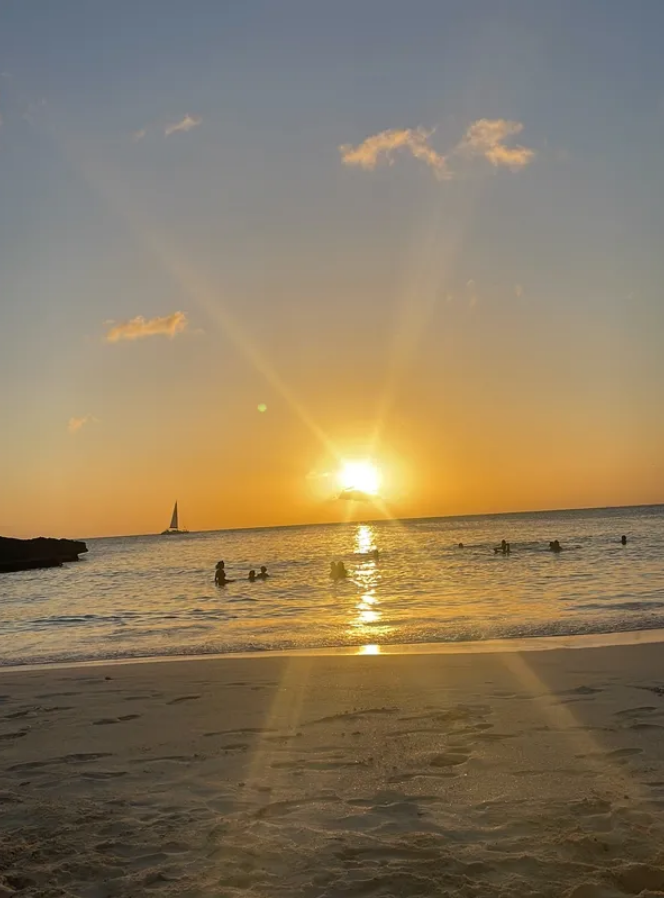Where is Sint Maarten/ Saint Martin located?

A LITTLE HISTORY
Island Snapshot
Located in the heart of the Caribbean Sea, this unique island lies approximately 1,460 miles south of New York and spans a total of 37 square miles. What makes it especially remarkable is that it’s the smallest landmass in the world shared by two separate nations:
- Dutch Sint Maarten in the South: 16 square miles
- Capital: Philipsburg
- French Saint Martin in the North: 21 square miles
- Capital: Marigot
This dual-nation island offers a rich blend of European charm and Caribbean flair—all in one unforgettable destination.
OFFICIAL LANGUAGE ON SINT MAARTEN
The island of Sint Maarten/Saint Martin is home to a rich blend of cultures, reflected in its languages:
- Dutch Side (Sint Maarten): The official language is Dutch, but English is widely spoken and is the main language used in daily life, education, and business.
- French Side (Saint Martin): The official language is French, but English is also commonly spoken, especially in tourist areas.
Thanks to its multicultural environment, you’ll also hear Spanish, Creole, and other languages throughout the island, making communication easy and welcoming for visitors from around the world.


OFFICIAL CURRENCY
The island’s two sides use different official currencies:
- Dutch Side (Sint Maarten): Netherlands Antilles Florin (also called the Guilder, abbreviated NAF)
- French Side (Saint Martin): Euro (€), just like mainland France and other French territories
That said, the U.S. dollar is widely accepted across both sides of the island. In fact, most prices are displayed in U.S. dollars alongside the local currency, making it easy and convenient for travelers—no need to worry about exchange rates or currency conversions during your stay.
TIME ZONE
Sint Maarten/Saint Martin is in the Atlantic Standard Time (AST) zone, which is UTC -4 hours.
- The island does not observe Daylight Saving Time, so the time remains consistent year-round.
This means it’s typically:
- 1 hour ahead of Eastern Standard Time (EST) during the U.S. winter months
- The same time as Eastern Daylight Time (EDT) when the U.S. is on daylight saving


Climate
St. Maarten/Saint Martin enjoys a tropical Caribbean climate, making it a warm and sunny destination year-round.
- Average temperatures range from 77°F to 88°F (25°C to 31°C).
- Trade winds from the northeast help keep the island pleasantly breezy.
- The sea temperature stays warm throughout the year, ideal for swimming and water sports.
Sunset Times
Sunset on St. Maarten/Saint Martin varies slightly throughout the year but generally falls between:
- 5:30 PM and 6:45 PM
Seasonal Variations:
- Winter months (November to January): Sunset is earlier, around 5:30 PM to 6:00 PM
- Summer months (May to August): Sunset is later, around 6:30 PM to 6:45 PM
Because the island is close to the equator, the daylight hours stay fairly consistent year-round, with only about a one-hour difference between the earliest and latest sunsets.


How Many Beaches Are on St. Maarten/Saint Martin?
The island of St. Maarten/Saint Martin boasts over 35 beaches, each with its own unique charm and vibe. Despite its small size—just 37 square miles—it offers one of the highest beach-to-land ratios in the Caribbean.
All beaches on St. Maarten/Saint Martin are public by law.
This means:
- You can freely access any beach, regardless of nearby resorts, villas, or restaurants.
- Some areas may have beach chairs and umbrellas for rent, especially in front of hotels or beach clubs, but you’re not required to pay to simply enjoy the beach.
- It’s perfectly fine to bring your own towel or chair and relax anywhere along the shoreline.
Whether you’re exploring a quiet cove or lounging at a lively beach bar, the island’s stunning beaches are open to everyone.
In Case of Bad Weather (Including Hurricanes)
Hurricanes and inclement weather are events beyond the control of both the Client and the Agency. While these situations are rare, especially during the dry season, the following policy applies:
- The Agency will make every reasonable effort to assist with rescheduling the venue, date, or time of the event if weather conditions prevent the original plan from proceeding.
- However, please note that the Agency cannot be held liable for cancellations due to bad weather, including tropical storms or hurricanes.
- Refunds will not be issued for services or charges already incurred or paid by the Agency on behalf of the Client.
We strongly recommend travel insurance that includes weather-related coverage, especially for weddings scheduled during the Atlantic hurricane season (June–November).


